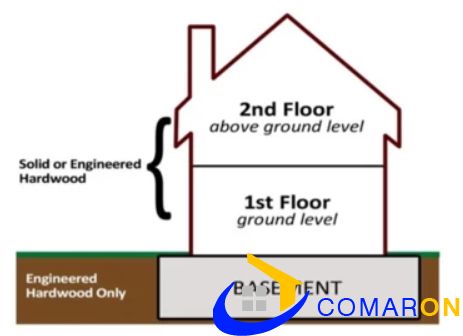
Navigating the world of hardwood flooring can feel like a tango with an indecisive partner – confusing and frustrating if you're unprepared. But fear not, aspiring home renovators! A sprinkle of knowledge can transform this chaotic dance into a confident waltz, landing you on the perfect hardwood haven. Buckle up, because we're about to unlock the secrets of the two most popular contenders: solid and engineered hardwood.
Understanding the fundamental differences between these floor types is key to making the right call. So, before we delve into the fancy footwork, let's break down the basics:
Imagine a floor crafted from a single, majestic tree. That's the charm of solid hardwood – each plank whispers stories of nature's grandeur. With superior durability and the ability to be refinished countless times, it's a timeless investment. However, this regal option comes with a few demanding pirouettes. Solid wood is sensitive to temperature and humidity fluctuations, meaning basements and moisture-prone areas are off-limits. Its installation also requires expertise, often involving nailing or stapling directly to a wooden subfloor.
Think of engineered hardwood as the understudy, ready to shine on any stage. Crafted from multiple layers of wood bonded together, it boasts impressive dimensional stability. This translates to worry-free installations in basements, over concrete slabs, and even radiant heating! Engineered wood also wins the adaptability award, accepting gluing, stapling, or even floating installations. However, its top layer, while durable, is thinner than its solid counterpart, limiting refinishing possibilities.
So, which option takes center stage in your home? Here's your cheat sheet:
Above ground level and wooden subfloor? Both shine equally. Basements, concrete slabs, or moisture-prone areas? Engineered wood takes the spotlight.
Both are built to last, but solid wood wins the long-term race with its refinishing potential.
Ultimately, the perfect hardwood partner depends on your home's choreography. Whether you crave the timeless grace of solid wood or the adaptability of engineered, choose the option that makes your space sing. Remember, knowledge is your pointe shoe, guiding you through the intricate steps of this flooring fandango. So, research, compare, and waltz into your dream hardwood haven!